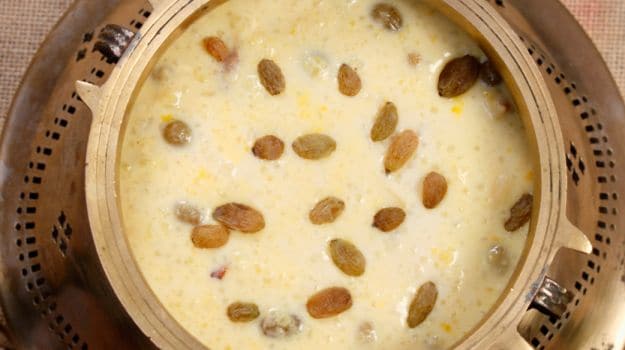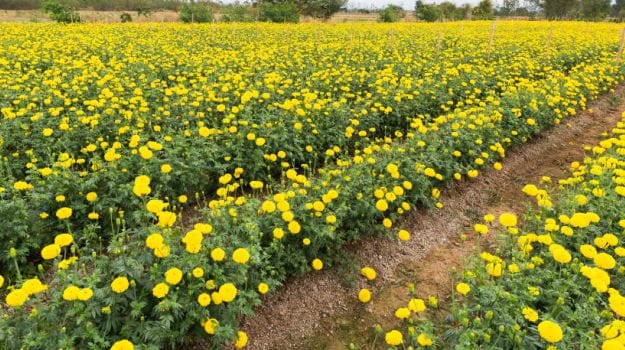Never had I paid attention to mathematics as much as I did on the day of Saraswati Puja. Piling up our schoolbooks in front of the idol, with the math book right on top, and our pens, and our notebooks - we would rely on the goddess to turn us into geniuses overnight. I doubt much has changed over the years. We all knew that Saraswati was the goddess of knowledge and learning, and if there was any faculty within us that required additional honing, only she could do it.But there is so much more to this day than just asking for last minute blessings. Saraswati puja coincides with Basant Panchami, the first day of spring, and it’s also observed as the day of birth of the goddess. The day is all about prosperity, energy, and enlightenment.Mostly a north Indian festival, it’s about celebrating the positivity spring brings with it – a sense of hope, and of course the delicious food that is cooked in different communities all over the country. Incidentally, while the date is observed even in South India, it’s mostly a temple festival, which is quite different from the way it’s celebrated in other parts of the country. From homes, shops, and most importantly educational institutes – Saraswati puja is celebrated with much fanfare everywhere. While in Bengal Basant Panchami marks Saraswati Puja, it’s also the kite festival in Punjab, and the harvest festival in Bihar. This was the day when yellow, also called ‘basanti’, became the colour of choice, and not without reason. Traditionally, yellow depicts the positive energy of life, and nature, and by default signifies the arrival of spring.
In our house in Kolkata, the day was marked with the preparation of luchiand cholar dal, and decorating the whole house with marigold flowers, especially the corner where the idol was placed. We would also create rangoli with rice paste, drawing tiny feet to signify the arrival of the goddess into our homes.Some of my aunts would make sweets, as it was almost imperative to sweeten one’s palate on the day, so that you’d have a sweet rest of the year. Boondi ladoos were quite a common offering, considering it’s yellow. I also remember eating mishti pulao (sweet pulao, coloured with a hint of saffron), and sandesh too. In fact, it was a completely vegetarian day, with not even fish allowed inside the house. In fact the ‘bhog’ or the meal eaten after the puja would mostly be the khichuri or khichdi, made with gobindobhog rice and moong dal, and loaded with vegetables such as cauliflower, potatoes, green peas, and tomatoes for the tanginess. This was usually served with begun bhaja - deep fried brinjal slices – a rather typical combination.

It’s rather interesting to note, that the jujube fruit, or the topa kul as it’s known in Bengali, was a very important part of the prasad that is offered to the goddess. In fact, from the time it would appear in the market, we were literally not allowed to eat it till Saraswati puja. A large plate of it would be offered to the goddess on the day of the festival, and only then were we allowed to devour them. In many homes, a sweet and sour chutney would also be made with the jujube fruit, to go along with the khichuri and begun bhaja.In Bihar, malpua is a favourite prasad during the time, as well askheer. Again, most sweets are coloured with saffron. In Punjab, the quintessentialsarson ka saag and makki ki rotiis prepared in pretty much every household, as well as the Zarda (or meethe chawal) – a sweetened rice dish that’s flavoured with dry fruits and yellow food colour.

In UP, Basant Panchami is celebrated by offering prayers to Lord Krishna where sheera or kesar halwa, or what’s known as Kesari Bath in Karnataka, is served as prasad. It’s typically cooked with semolina, almonds, raisins, cashews, cardamom powder, nutmeg, saffron, some yellow food colour if necessary, and ghee. Very rarely is the festival celebrated with a grand feast – the food is always simple, and typically made at home, which would include even the sweets, as long as it’s yellow.Saraswati Puja Mahurat: 9:16 am to 12:35 pm
Panchami Tithi Timings: Starts at 9:16 am on 12th February and ends on 6:39 am on 13th February
Saraswati Puja Vidhi: It's auspicious to start your education on this day. This ritual is known as Vidya-Arambham or Akshar-Abhyasam. Yellow is the colour of spring and this festival. People wear yellow clothes, offer marigold flowers to the goddess and prepare prasad with a pinch of saffron to celebrate.About the author:Priyadarshini Nandy would love to call herself the writer who "divides her time between London and Prague", but being able to call both Bengaluru and Kolkata her home is equally gratifying. As an independent journalist, she writes about food, theatre, travel, and more food, for various publications - new age and old school.Disclaimer:The opinions expressed within this article are the personal opinions of the author. NDTV is not responsible for the accuracy, completeness, suitability, or validity of any information on this article. All information is provided on an as-is basis. The information, facts or opinions appearing in the article do not reflect the views of NDTV and NDTV does not assume any responsibility or liability for the same.
In our house in Kolkata, the day was marked with the preparation of luchiand cholar dal, and decorating the whole house with marigold flowers, especially the corner where the idol was placed. We would also create rangoli with rice paste, drawing tiny feet to signify the arrival of the goddess into our homes.Some of my aunts would make sweets, as it was almost imperative to sweeten one’s palate on the day, so that you’d have a sweet rest of the year. Boondi ladoos were quite a common offering, considering it’s yellow. I also remember eating mishti pulao (sweet pulao, coloured with a hint of saffron), and sandesh too. In fact, it was a completely vegetarian day, with not even fish allowed inside the house. In fact the ‘bhog’ or the meal eaten after the puja would mostly be the khichuri or khichdi, made with gobindobhog rice and moong dal, and loaded with vegetables such as cauliflower, potatoes, green peas, and tomatoes for the tanginess. This was usually served with begun bhaja - deep fried brinjal slices – a rather typical combination.

It’s rather interesting to note, that the jujube fruit, or the topa kul as it’s known in Bengali, was a very important part of the prasad that is offered to the goddess. In fact, from the time it would appear in the market, we were literally not allowed to eat it till Saraswati puja. A large plate of it would be offered to the goddess on the day of the festival, and only then were we allowed to devour them. In many homes, a sweet and sour chutney would also be made with the jujube fruit, to go along with the khichuri and begun bhaja.In Bihar, malpua is a favourite prasad during the time, as well askheer. Again, most sweets are coloured with saffron. In Punjab, the quintessentialsarson ka saag and makki ki rotiis prepared in pretty much every household, as well as the Zarda (or meethe chawal) – a sweetened rice dish that’s flavoured with dry fruits and yellow food colour.

In UP, Basant Panchami is celebrated by offering prayers to Lord Krishna where sheera or kesar halwa, or what’s known as Kesari Bath in Karnataka, is served as prasad. It’s typically cooked with semolina, almonds, raisins, cashews, cardamom powder, nutmeg, saffron, some yellow food colour if necessary, and ghee. Very rarely is the festival celebrated with a grand feast – the food is always simple, and typically made at home, which would include even the sweets, as long as it’s yellow.Saraswati Puja Mahurat: 9:16 am to 12:35 pm
Panchami Tithi Timings: Starts at 9:16 am on 12th February and ends on 6:39 am on 13th February
Saraswati Puja Vidhi: It's auspicious to start your education on this day. This ritual is known as Vidya-Arambham or Akshar-Abhyasam. Yellow is the colour of spring and this festival. People wear yellow clothes, offer marigold flowers to the goddess and prepare prasad with a pinch of saffron to celebrate.About the author:Priyadarshini Nandy would love to call herself the writer who "divides her time between London and Prague", but being able to call both Bengaluru and Kolkata her home is equally gratifying. As an independent journalist, she writes about food, theatre, travel, and more food, for various publications - new age and old school.Disclaimer:The opinions expressed within this article are the personal opinions of the author. NDTV is not responsible for the accuracy, completeness, suitability, or validity of any information on this article. All information is provided on an as-is basis. The information, facts or opinions appearing in the article do not reflect the views of NDTV and NDTV does not assume any responsibility or liability for the same.
Advertisement



